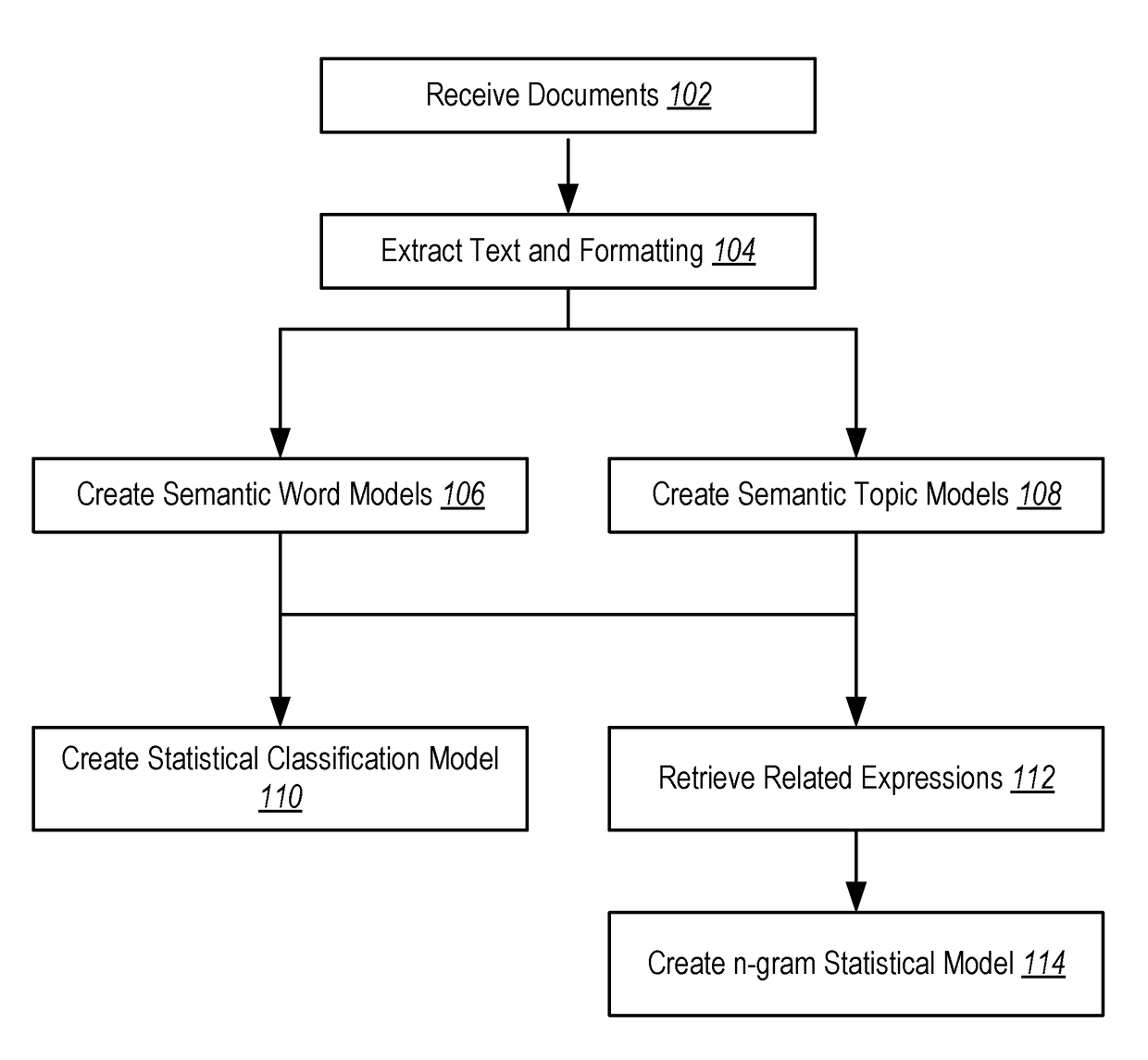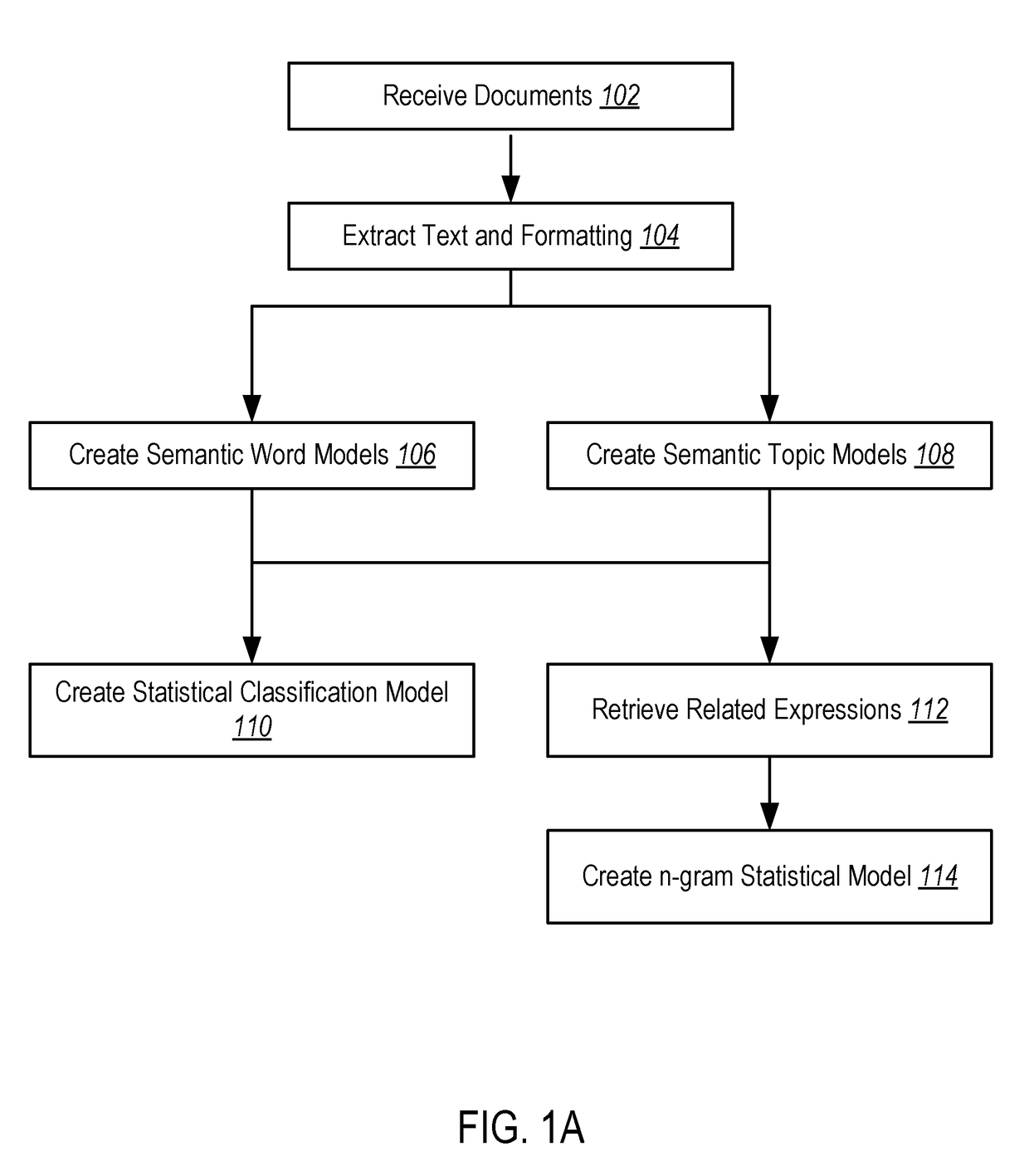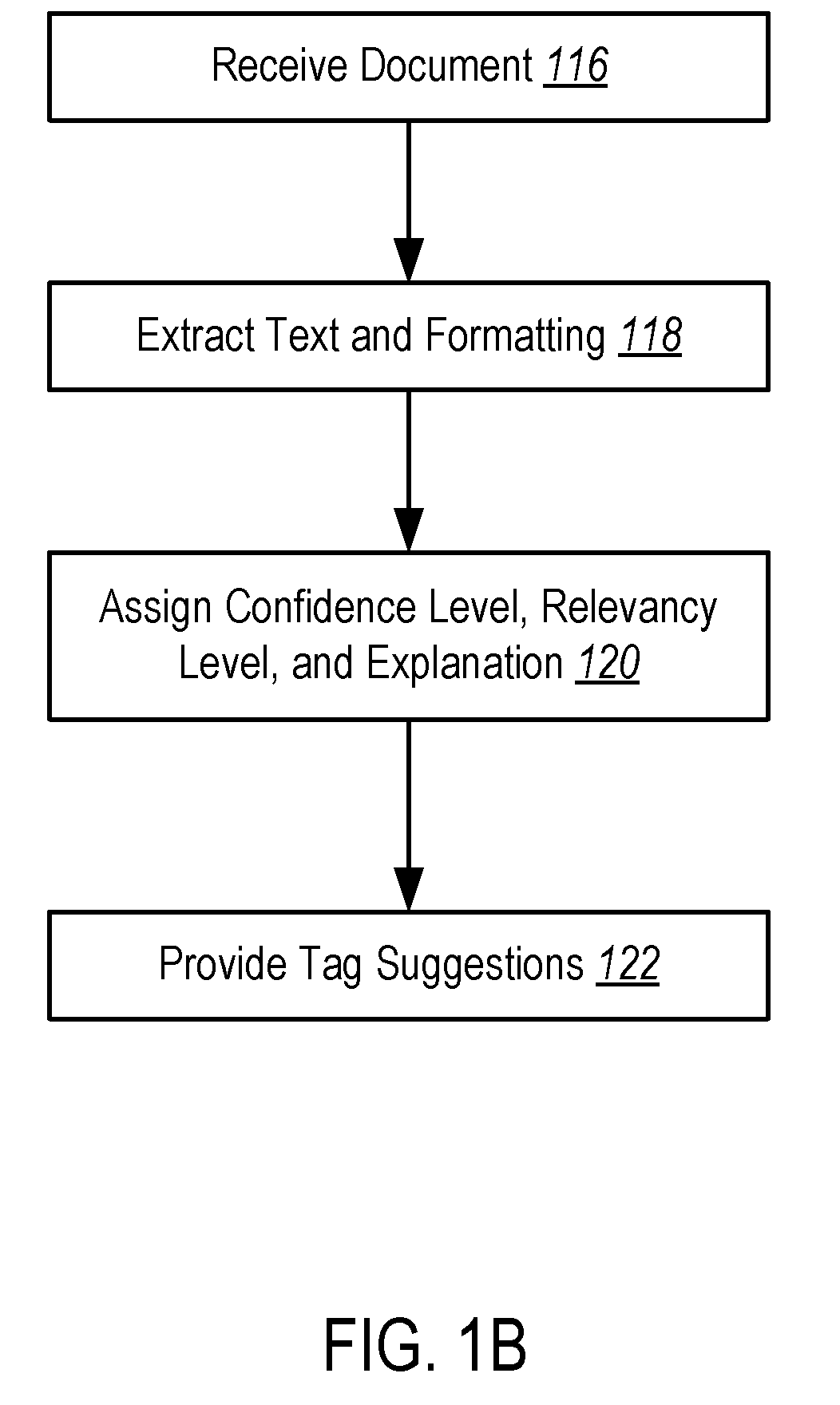Systems and methods for document processing using machine learning
a machine learning and document processing technology, applied in the field of machine learning and natural language processing, can solve the problems that models cannot be expected to learn automatically, raw pdf data cannot be simply input into models, etc., and achieve the effect of accurate comparison of documents, quick understanding of the content of a large document set, and high tagging accuracy
- Summary
- Abstract
- Description
- Claims
- Application Information
AI Technical Summary
Benefits of technology
Problems solved by technology
Method used
Image
Examples
second embodiment
[0148]In a second embodiment, the method may utilize user interest to determine the ranking of the similar documents. In this embodiment, the method utilizes various user profile data (e.g., user preferences, created or liked tags, favorite document sources, etc.) to rank the similar documents. This embodiment may be utilized when a user has exhibited few interactions with documents and thus the previous embodiment may yield minimally useful results. In some embodiments, an interest score is calculated using a series of formulas and weights that were refined using grid-search.
third embodiment
[0149]In a third embodiment, the method may allow for override by a system administrator, thus allowing an administrator to manually re-rank documents according to one or more rules defined by the administrator. For example, an administrator may manually rank certain tags for certain users higher than other tags. In some embodiments, each of the three embodiments disclosed above may be used simultaneously.
[0150]In step 726, the method provides similar documents.
[0151]In some embodiments, the method is configured to package the relevant documents into an ordered list of documents, wherein each document is associated with a relevancy score (e.g., based on the tag-computed relevancy score and / or the similarity score) and an explanation of why each document is relevant to the target document. In some embodiments, the method is configured to transmit this listing of documents to an end user for display.
[0152]FIG. 8 is a block diagram illustrating a system for identifying documents relate...
PUM
 Login to View More
Login to View More Abstract
Description
Claims
Application Information
 Login to View More
Login to View More - R&D
- Intellectual Property
- Life Sciences
- Materials
- Tech Scout
- Unparalleled Data Quality
- Higher Quality Content
- 60% Fewer Hallucinations
Browse by: Latest US Patents, China's latest patents, Technical Efficacy Thesaurus, Application Domain, Technology Topic, Popular Technical Reports.
© 2025 PatSnap. All rights reserved.Legal|Privacy policy|Modern Slavery Act Transparency Statement|Sitemap|About US| Contact US: help@patsnap.com



